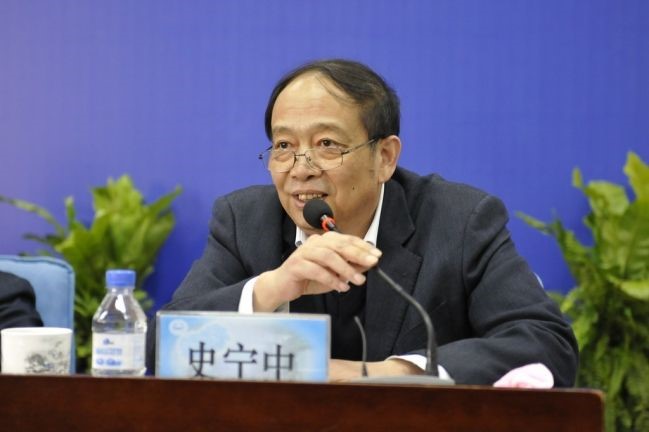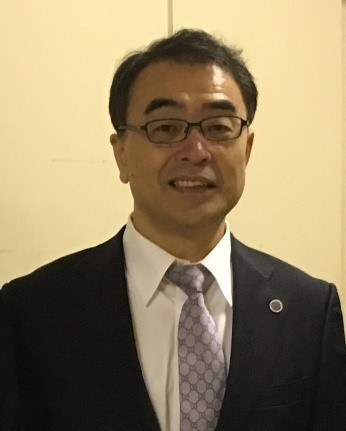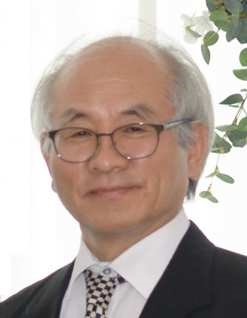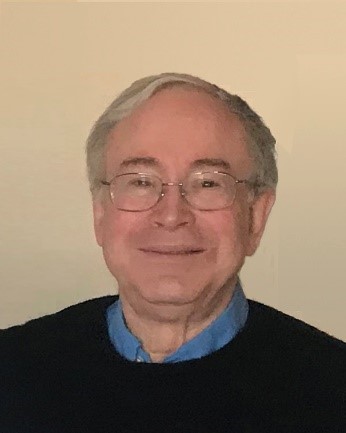2019


Plenary speakers
Contents
Prof. Roza LeikinProf. Kenneth Ruthven
Prof. Ningzhong Shi
Prof. Yoshinori Shimizu
Prof. Hyunyong Shin
Prof. Zalman Usiskin
Prof. Roza Leikin
(Professor at the University of Haifa, Israel; Head of Department of Mathematics Education)
Teachers’ professional potential for teaching mathematics with technological tools
Abstract
There are a wide range of uses of technology in mathematics education, varying from technology as an additional didactical tool to revolutionary instructional innovations. Technological tools in use in mathematics classrooms include electronic books, dynamic diagrams, internet sources and many more. Although over the past two decades we have observed growth in technology-based practices in mathematics classrooms, the type and quality of said practices differ significantly from class to class. Implementation of technology depends heavily on teachers’ goals and on their professional potential. In my lecture I will analyze different components of teachers’ professional potential, which are critical for teaching mathematics with technological tools, using the examples of Stepped Tasks and Investigations Tasks.
Bio sketch
 Roza Leikin is a Professor of Mathematics Education and Gifted Education at the Faculty of Education, University of Haifa. Her research and practice embrace four interrelated areas: mathematical creativity and ability; mathematics teacher education; task design for heterogeneous classrooms; and mathematical challenges in education. Additionally, she is focused on the integration of neuro-cognitive research in the field of mathematics education.
Roza Leikin is a Professor of Mathematics Education and Gifted Education at the Faculty of Education, University of Haifa. Her research and practice embrace four interrelated areas: mathematical creativity and ability; mathematics teacher education; task design for heterogeneous classrooms; and mathematical challenges in education. Additionally, she is focused on the integration of neuro-cognitive research in the field of mathematics education.
Dr. Leikin is the Head of the Department of Mathematics Education and the Director of the RANGE Center - the Interdisciplinary Center for the Research and Advancement of Giftedness - and Co-chair of the Neuro-cognitive laboratory for the investigation of creativity, ability and giftedness in the University of Haifa. During 2012-2017 she served as the President of MCG – the International Group for Mathematical Creativity and Giftedness (affiliated with ICMI http://igmcg.org/) - and from 2017-2019 she continued to serve as a Post-President of MCG. During 2013-2017 she was the Head of the Mathematics Education Advisory Board in the Israeli Ministry of Education.
She established (in 2014), and currently leads, Club-5 – an organization for communities of practice of teachers of high-level high school mathematics which now include more than 350 Israeli teachers. She leads two additional R&D projects (Steps-to-5 and MathKey) devoted to the development and implementation of instructional activities for heterogeneous mathematics classes in secondary school. Leikin has edited ten books and journal volumes focused on research in mathematics teacher education, gifted education, the nature and nurture of mathematical abilities and creativity. She has published more than 150 papers in peer reviewed research journals, books, and refereed conference proceedings. For more details, see http://ps.edu.haifa.ac.il/roza-leikin.html.
Prof. Kenneth Ruthven
(Emeritus Professor at the University of Cambridge, UK; Former Editor in Chief of Educational Studies in Mathematics)
Ecological, epistemological and existential challenges of integrating digital tools into school mathematics
Abstract
There has now been over half a century of sustained advocacy and effort directed towards developing the use of digital computational tools within school mathematics. However, whereas the use of such tools is now commonplace in mathematical practice outside school, the degree to which their use has become integral to school mathematics remains limited. This talk will identify three fundamental aspects of challenge to such integration, and indicate the advances necessary to surmount them:
• Ecological: adapting the everyday practice of school mathematics to make use of digital tools within the operative constraints of time, space and infrastructure.
• Epistemological: developing disciplinary and didactical knowledge to inform the use of digital tools in school mathematics and the associated evolution of the subject.
• Existential: understanding how (collective and individual) representations, values and identities relating to school mathematics mediate the use (and non-use) of digital tools.
Bio sketch
 Kenneth Ruthven is Emeritus Professor of Education at the University of Cambridge, and Life Fellow of Hughes Hall. He is also Guest Professor in Mathematics Education at Karlstad University in Sweden and at the University of Agder in Norway. A Fellow of the Academy of Social Sciences, Ruthven has served as Editor in Chief of Educational Studies in Mathematics, as Chair of the British Society for Research into Learning Mathematics, and as Chair of Trustees of the iconic School Mathematics Project
Kenneth Ruthven is Emeritus Professor of Education at the University of Cambridge, and Life Fellow of Hughes Hall. He is also Guest Professor in Mathematics Education at Karlstad University in Sweden and at the University of Agder in Norway. A Fellow of the Academy of Social Sciences, Ruthven has served as Editor in Chief of Educational Studies in Mathematics, as Chair of the British Society for Research into Learning Mathematics, and as Chair of Trustees of the iconic School Mathematics Project
Ruthven's professional interests include the improvement of mathematics teaching, and of STEM education more broadly; the design and integration of innovative educative tools and resources; the education and professional development of teachers; and the refinement of theory and method in educational research. His research examines curriculum, pedagogy and assessment, especially in mathematics, and particularly in the light of technological change. A leitmotif of much of this research has been to analyse how well-intentioned reform efforts – notably around technology integration – can be derailed by unappreciated complexities, and so to illuminate how practical solutions can be devised.
Ruthven's most highly cited research has been on technology-integrating teaching practices, technology-mediated mathematical thinking, mathematical knowledge in teaching, proof practices and constructs, ability stereotyping in mathematics, design tools in didactical research, and warranted practice in teaching. Recent projects have developed his Structuring Features of Classroom Practice framework, explored dialogic approaches to school mathematics and science teaching, analysed the construct of resource system for teaching, and reviewed the last 20 years of European research in mathematics education.
Current information about Ruthven's professional activities can be found on his homepage at(http://www.educ.cam.ac.uk/people/staff/ruthven/),and his publications can be listed (either by date of appearance or by number of citations) on his Google Scholar page at (https://scholar.google.co.uk/citations?user=lbd-u0sAAAAJ&hl=en&oi=ao).
Prof. Ningzhong Shi
(Emeritus Professor at Northeast Normal University, China; Former President of Northeast Normal University)
Chinese Mathematics Curriculum Reform and Teacher Professional Development in the 21st Century
Abstract
The curriculum reform in the 21st Century started from The National Program for Elementary Education Curriculum Reform (Trial) promulgated by the state in 2001. Formally, it was returned from the syllabus to the curriculum standards. Ideologically, it was transformed from knowledge-orientated to learner-centered. From the perspective of the goal,it was developed from one dimension to three dimensions.
Mathematics Curriculum Standards for Compulsory Education, developed from two basics to four basics, from two abilities to four abilities. In addition, Mathematics Curriculum Standards for Senior High School further emphasized the core mathematics competencies and described the ultimate goal of mathematics education——to observe the world from mathematical perspective, to think about the world with mathematical thinking, to express the world in mathematical language.
All of the above changes have a clear requirement for the mathematics teacher professional development, that is, to implement mathematics education based on four basics or the core competencies. This involves the transformation of the educational and instructional ideas, the understanding of the nature of knowledge and the grasp of students’ cognitive process, and it also involves the rational design and effective implement of teaching.
Bio sketch
 Professor Ningzhong Shi was born in Nanjing in 1950. He was the president of Northeast Normal University, the delegate of the 10th and 11th National People's Congress, the delegate of the 9th, 10th, and 11th Jilin Province People's Congress. He served as a member of the Discipline Review Group of the State Council, the vice president of the Chinese Society of Education, the 5th Chinese National Outstanding Teacher, the head of the Revision Group of the Mathematics Curriculum Standards for Compulsory Education and the head of the Revision Group of the Mathematics Curriculum Standards for Senior High School.
Professor Ningzhong Shi was born in Nanjing in 1950. He was the president of Northeast Normal University, the delegate of the 10th and 11th National People's Congress, the delegate of the 9th, 10th, and 11th Jilin Province People's Congress. He served as a member of the Discipline Review Group of the State Council, the vice president of the Chinese Society of Education, the 5th Chinese National Outstanding Teacher, the head of the Revision Group of the Mathematics Curriculum Standards for Compulsory Education and the head of the Revision Group of the Mathematics Curriculum Standards for Senior High School.
Professor Shi is an honorary professor and a doctoral supervisor at Northeast Normal University. He is the director of the Academic Committee of the Chinese Society of Education, the member of the National Textbook Committee, the associate director of Committee of Experts of National Primary Educational Materials of the Ministry of Education, and the head of the Revision Group of the Mathematics Curriculum Standards for Compulsory Education.
Professor Shi’s major research interest is mathematical statistics. He presided over more than 10 Key Projects of National Natural Science Foundation of China as well as Key Demonstration Projects of the Ministry of Science and Technology of China. He has published more than 100 papers, in which more than 80 are in the world first-class journals indexed by SCI and have been cited for nearly 1000 times.
Professor Shi is also engaged in research in Education, Mathematics Education, and Philosophy. He has published many papers in Educational Research, Philosophical Research, Historical Research, and Curriculum, Teaching Material and Method. His published books include Introduction to Mathematical Thoughts, Eighteen Lectures on Basic Mathematical Thoughts, Basic Concepts and Algorithm, Algebra-geometry Combination, and Mathematical Models.
Prof. Yoshinori Shimizu
(Professor at the University of Tsukuba, Japan; Vice President of Japan Society of Mathematical Education)
Looking into the Technical Vocabulary of Mathematics Teachers:
An Approach to the System of "Lesson Study"
Abstract
The Japanese tradition of Lesson Study has created a teaching community in which observation and discussion of teaching are integral parts of professional practice. In this community, particular lexical terms of specific significance are shared and utilized. The current study aims to address the terms and phrases that Japanese teachers use to describe the phenomena in the mathematics classrooms. The study explores the constituent elements and structural characteristics of the Japanese lexicon, as a part of the international Lexicon Project that aims to document and compare the naming systems in participating countries. We created a lexicon of 76 terms and their extensive descriptions. An electronic survey was conducted for a national validation to examine how familiar the terms were for the mathematics teachers in Japan. Overall, the terms were very familiar to the respondents, although some terms were somewhat less frequently in use. An evolving nature of lexical terms has appeared through the process of analyses.
Bio sketch
 Professor Yoshinori Shimizu is a professor of mathematics education at Graduate School of Comprehensive Human Sciences, University of Tsukuba that is one of the major research institutions in Japan. He has been a chair of the master program in education and doctoral program in school education at University of Tsukuba.
Professor Yoshinori Shimizu is a professor of mathematics education at Graduate School of Comprehensive Human Sciences, University of Tsukuba that is one of the major research institutions in Japan. He has been a chair of the master program in education and doctoral program in school education at University of Tsukuba.
He was a chair of the national committee for the new national curriculum guidelines in elementary mathematics that was released in March 2018. He is currently a vice president of Japan Society of Mathematical Education. Also he was a co-chair of ICMI Study 24 on Reforms in School Mathematics that was held in November 2018.
His primary interests include international comparative study on mathematics classrooms instruction and student assessment. In this regard, he was a member of Mathematics Expert Group (MEG) for OECD/PISA 2003, 2006, and 2009, as well as a consultant for 1995 TIMSS Videotape Classroom Study. Also, he is one of the founders of Learner’s Perspective Study (LPS), a sixteen countries comparative study on mathematics classrooms and has been the Japanese team leader of the project. He was one of the editors of the following books from the Learner’s Perspective Study: Mathematical Tasks in Classrooms around the World (2010) and Mathematics Classrooms in Twelve Countries: The Insider’s Perspective (2006). Publication includes teacher education and lesson study.
Prof. Hyunyong Shin
(Former Professor at Korea National University of Education, Korea; Former President of Korea Society of Mathematics Education)
Elements in Art: From Euclid to Max Bill
Abstract
Introduction
We may say that the ultimate focus of mathematics and arts is beauty. It is quite natural that mathematics is with art, even though it is sometimes implicit. In this talk, on an educational perspective we pay attention to mathematics in the arts of Western of 20th century. By art we mean painting, sculpture, architecture, and design.
1
In his painting ‘School of Athens,’ Raffaello has put mathematical codes which are harmonic and arithmetic means of two rational numbers. Those codes are actually musical. Various ratios are the theme in school mathematics as well as in Euclid’s “Elements.”
2
Euclid’s “Elements” has played important roles in various disciplines during more than 2,000 years. It is told that at the gate of “Academy” of Plato the following notice was posted:
Let no one ignorant of geometry may enter.
It is also told that Greek philosophers, following Plato, posted the similar notice “Let no one come to our school who has not learned the Elements of Euclid.” at the gates of their own schools.
The artists of “De Stijl,” a Dutch movement of art in early 20th century, have explicit interests in mathematics. We remember that Pieter Cornelis Mondriaan (1872–1944) has mentioned that “I wish to approach truth as closely as is possible, and therefore I abstract everything until I arrive at the fundamental quality of objects.” and Theo van Doesburg (1883-1931) has said that “Most artists are like pastry-cooks and milliners. In contrast, we use mathematical data (where Euclidean or not) and science, that is to say, intellectual means.” It is also quite possible for Georges Vantongerloo (1886–965), another De Stijl artist, to read Euclid “Elements.”
3
De Stijl artists seem to be influenced by an unusual version of Euclid’s “Elements” drawn by an English mathematician Oliver Byrne. We may claim this by comparing works of De Stijl artists with figures in Byrne’s book. It is also quite probable for Vantongerloo to read the classical version of “Elements.” We present various examples in the talk.
4
More mathematics has been involved in the works of the artists of the second half of 20th century. We discuss mathematics with ideas and works of Le Corbusier (1887-1965) and Maurits Cornelis Escher (1898-1972).
5
Max Bill (1908–1994) has inherited the basic spirit and tradition of “Bauhaus,” a German movement of arts in early 20th century. In his works he expressed deep interest and understanding in mathematics. He has said “I am convinced it is possible to evolve a new form of art in which the artist's work could be founded to quite a substantial degree on a mathematical line of approach to its content.”
6
We can present some mathematics visually. Our approach is quite different from Byrne’s. We do not claim that our works are “artistic.” We present mathematical facts not artfully but just visually mainly for mathematics education.
7
We have been convinced that our visual presentations be helpful for students to understand and enjoy mathematics. In the talk, we introduce briefly a STEAM material for teaching mathematics at the secondary schools.
Conclusion
Curiosity, freedom, and imagination as well as problem solving are essential in mathematics. The same is true in arts. Mathematics has been with arts even though it is sometimes implicitly. Visually presented mathematics seems to be interesting and enjoyable to students.
Bio sketch
 Hyunyong Shin (申鉉容) has been a professor of Korea National University of Education for more than 30 years. He has served Korean Society of Mathematical Education, Korea Sub-commission of ICMI, and Local Organization of ICME-12 as presidents.
Hyunyong Shin (申鉉容) has been a professor of Korea National University of Education for more than 30 years. He has served Korean Society of Mathematical Education, Korea Sub-commission of ICMI, and Local Organization of ICME-12 as presidents.
Shin’s main focus is on interdisciplinary dialogues on which he has published various books and articles. Mathematics in Music (book in Korean), Mathematics in Design (book in Korean), Mathematics: Code for Interdisciplinary Dialogues (book in Korean), Korean Traditional Patterns: Frieze and Wallpaper (article in English) are some of them.
His four books (Mathematics in Music, Mathematics in Design, Symmetry: Galois Theory, Mathematics: Code for Interdisciplinary Dialogues) has been awarded as outstanding academic books from the National Academy of Sciences, Republic of Korea.
Recently, through a project Visual Presentation of Mathematics, he presents mathematics through drawing pictures, making mobiles and umbrellas, decorating furniture, and constructing musical instruments. He also proposing STEAM teaching/learning programs of mathematics for primary and secondary schools.
Prof. Zalman Usiskin
(Emeritus Professor at the University of Chicago, USA; Former Overall Director of University of Chicago School Mathematics Project (UCSMP))
Teachers’ Mathematics as a Branch of Applied Mathematics
Abstract
Applied mathematics refers to that mathematics that arises out of problems in the real world. From classroom situations a large body of mathematics arises that secondary school mathematics teachers should know in order to teach well, yet that they do not normally encounter in their school or college mathematics courses. This teachers' mathematics starts from classroom situations and classroom content and constitutes an in-depth understanding of that mathematics from a variety of points of view. This knowledge is important in the mathematics classroom because it enables teachers to take students further into and beyond the mathematics of the curriculum, and because it can help teachers to reach students who have difficulty learning. It includes the well-known pedagogical content knowledge but also concept analysis, problem analysis, and connections and generalizations to other mathematics. This body of knowledge is quite large compared to the attention given to it in preservice and inservice teacher preparation, perhaps because the mathematics is seen as too simple. In this presentation, I hope to demonstrate that the mathematics is rich, not so simple, and deserving to be placed alongside branches of applied mathematics such as operations research, combinatorics, and computational science and given more importance in mathematics teacher education.
Bio sketch
 Zalman Usiskin is a professor emeritus of education at the University of Chicago, where he was an active faculty member from 1969 through 2007. In 1983 he helped initiate the University of Chicago School Mathematics Project (UCSMP) and he served as its overall director from 1987 until June of this year.
Zalman Usiskin is a professor emeritus of education at the University of Chicago, where he was an active faculty member from 1969 through 2007. In 1983 he helped initiate the University of Chicago School Mathematics Project (UCSMP) and he served as its overall director from 1987 until June of this year.
His research has focused on the teaching and learning of arithmetic, algebra, and geometry, with particular attention to applications of mathematics at all levels and the use of transformations and related concepts in geometry, algebra, and statistics. His interests are broader, covering all aspects of mathematics education, with particular emphasis on matters related to curriculum, instruction, and testing; the selection and organization of content; the teaching and learning of mathematics; international mathematics education; teacher education; the history of mathematics education; and educational policy.
He is the author or co-author of over 150 articles and other papers on mathematics and mathematics education, dozens of books and book-length research monographs, including textbooks and their teachers’ editions. The UCSMP curriculum for grades 6-12 is a full mathematics curriculum that covers both pure mathematics and its applications and utilizes and whose latest edition assumes students have access to computer algebra systems, dynamic algebra and geometry, spreadsheets, and other technology. In 2014, NCTM published a book containing 38 of his talks and articles, the first time the organization has published a collection of writings of one person.
He has spoken at conferences or colloquia in all 50 U.S. states and 25 foreign countries. He has been on the program of every International Congress of Mathematical Education (ICME) since 1972 and was a special invited lecturer in Canada in 1992, and in Korea in 2012. He has received the highest honors bestowed by the two largest mathematics education organizations in the United States, the Glenn Gilbert (National Leadership) Award from the National Council of Supervisors of Mathematics in 1994, and a Lifetime Achievement Award from NCTM in 2001. In 2018 he received the ISDDE Prize for Lifetime Achievement from the International Society for Design and Development in Education.
His remarks at this conference are exemplified in Mathematics for High School Teachers: An Advanced Perspective, a text for advanced undergraduate and graduate mathematics courses for students interested in gaining deeper knowledge about high school mathematics.